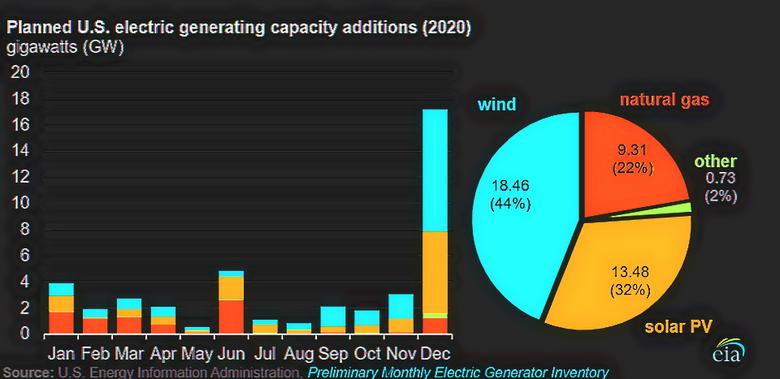
CLEAN ENERGY: BENEFITS OF PAYERS

By Steven Transeth, President Transeth & Associates, PLLC
ENERGYCENTRAL - The Unintended Consequences of PURPA
The Federal Energy Regulatory Commission’s (FERC’s) issued a Notice of Proposed Rulemaking (NOPR) titled, “Qualifying Facility Rates and Requirements; Implementation Issues Under the Public Utility Regulatory Policies Act [PURPA] of 1978.” I strongly support FERC modernizing the almost 40-year-old regulations through this rulemaking process.
Since the enactment of PURPA, we have seen a dramatic surge in the amount of clean energy and fortunately, we have also seen the costs of renewable energy sources decrease significantly. Yet ratepayers have not been able to benefit from these significantly lower costs of clean energy because of how PURPA is structured and the fact that PURPA contracts are long term (lasting up to 20 years). It is clear that PURPA is not keeping up with the innovation and lower costs we are seeing in the market. Consumers are paying unnecessarily high, decades-old prices for renewable resources and are denied the ability to take advantage of lower prices.
These unintended consequences are not what the drafters had in mind when PURPA became law and we should not let PURPA remain stuck in the past.
As a former commissioner at the Michigan Public Service Commission, I saw first-hand how FERC’s outdated PURPA regulations have created problems for Michigan’s consumers and electricity market. The Commission noted on September 26, 2019 (Case No. U-18091) “…, in light of the significant changes in the energy landscape and the imminent expiration of many of the original PURPA contracts, it is an opportune time to undertake a comprehensive reexamination of PURPA, with a focus on identifying appropriate, updated methods for establishing avoided costs.”
Consumers Energy, a 130-year-old energy company servicing over 6.7 million Michiganders, has existing PURPA contracts – which have been in place for decades – that do not reflect current market prices for energy. According to Consumer Energy’s CEO, Patti Poppe, the current existing PURPA contracts are 30 to 50 percent above the current market value, amounting to millions in unnecessary costs to ratepayers.
These unnecessary overpayments and costs are not limited to Michigan. Concentric Energy Advisors found that between 2009 – 2018 utilities and consumers overpaid between $150.7 million and $216.2 million per year across the United States.
A well-designed updated PURPA policy needs to carefully address four important questions:
1. Project Scale: What is the appropriate dividing line between projects that are small enough to qualify for standard contract terms under PURPA versus large enough to merit being sourced and contracted in other ways?
2. Capacity Need: Under what circumstances should a utility be judged to have a capacity need, and therefore be required to make capacity payments to qualifying facilities (QF)? Answering this question shapes the appropriate avoided cost methodology.
3. Contract Price: Given the capacity need determination, what is the appropriate pricing algorithm for a standard offer PURPA contract?
4. Contract Duration: What is the appropriate contract duration for standard offer PURPA contracts?
FERC’s NOPR helps solve Michigan’s PURPA problem by proposing to revise how rates are set for qualifying facilities. FERC proposes to provide states with the flexibility to establish different rates instead of locking in long-term contracts at above‑market rates. This includes allowing states to establish rates by competitive prices and “as-available” energy rates. I support FERC’s effort to provide additional flexibility for states to use other means for setting QF rates to protect ratepayers.
FERC’s common-sense proposed modifications to PURPA provisions will provide more competition between power producers that will lead to lower rates for consumers.
FERC’s NOPR also provides for modernizing several areas including the “one-mile rule,” how rates are set, and the obligation to purchase power.
Currently, FERC’s regulations state that power production facilities that generate less than 80 megawatts (MW) of electricity are considered the same facility if they are within one mile of each other, use the same energy resource, and are owned by the same person or its affiliates. This is known as the “one-mile rule.”
In this NOPR, FERC has taken a logical step by allowing for a “rebuttable presumption” to the one-mile rule to ensure that QFs are those intended by PURPA. FERC proposes several factors to be considered when determining whether a facility should be a QF (84 FR 53261 - October 4, 2019). I agree with the consideration of physical and ownership characteristics listed by FERC and believe that they all should be considered in some form or another in a way that provides clear rules.
New FERC regulations for PURPA are long overdue, both for the sake of consumers and the future of the nation’s electric grid, which is undergoing significant transformation. PURPA is an important tool that, if improved and updated through this rulemaking, can help foster competition, spur innovation, reduce emissions, and keep electricity prices affordable.
-----
This thought leadership article was originally shared with Energy Central's Utility Management Community Group. The communities are a place where professionals in the power industry can share, learn and connect in a collaborative environment. Join the Utility Management Community today and learn from others who work in the industry.
-----












